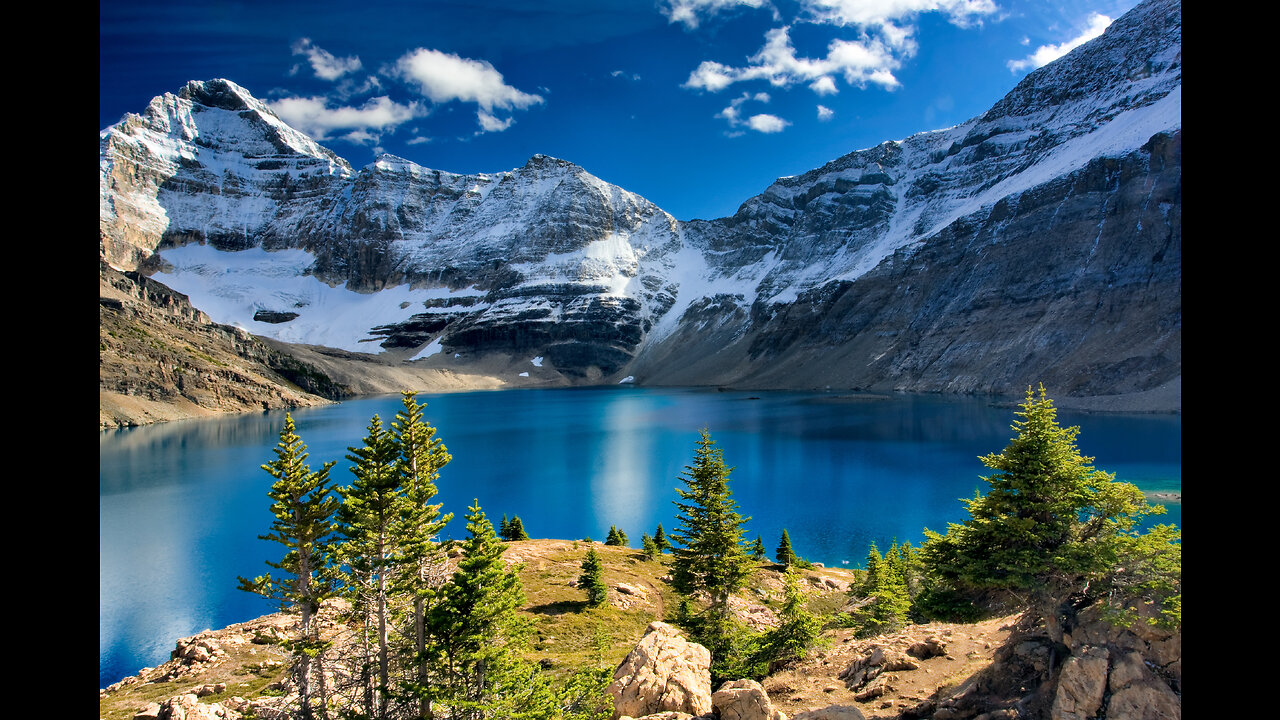Premium Only Content

Mountains and its relaxing music #22
The reality of mountains encompasses both their captivating beauty and the harsh realities that come with their existence. While they are often romanticized as serene and peaceful, mountains also present challenges and dangers that need to be acknowledged. Here is a description of the reality of mountains:
Harsh and Unforgiving Terrain: Mountains are characterized by their rugged terrain, with steep slopes, jagged peaks, and treacherous cliffs. Navigating through mountainous landscapes can be physically demanding and mentally taxing. The unforgiving nature of mountains requires careful planning, endurance, and respect for the environment.
Extreme Weather Conditions: Mountains are known for their rapidly changing and extreme weather conditions. Altitude, coupled with variations in temperature and air pressure, can lead to intense storms, blizzards, high winds, and sudden drops in temperature. These weather phenomena can pose significant risks to mountaineers, hikers, and other adventurers.
Altitude Sickness and Oxygen Deprivation: As elevation increases, the air becomes thinner, resulting in decreased oxygen levels. Altitude sickness can affect individuals who ascend too quickly, causing symptoms such as headaches, nausea, dizziness, and fatigue. Proper acclimatization is crucial to mitigate the effects of altitude on the human body.
Remote and Isolated Environments: Mountains are often remote and isolated, far from populated areas and infrastructure. This remoteness poses challenges in terms of accessibility, communication, and emergency response. Rescues in mountainous terrain can be difficult and time-consuming, requiring specialized skills and resources.
Fragile Ecosystems: Mountain ecosystems are delicate and vulnerable to human activities and climate change. The fragile balance of flora and fauna in these habitats can be disrupted by uncontrolled tourism, deforestation, pollution, and invasive species. It is crucial to practice responsible and sustainable behavior to preserve mountain environments.
Avalanches and Rockfalls: Mountains are prone to natural hazards such as avalanches and rockfalls, which can occur with little warning. These events can be triggered by weather conditions, seismic activity, or human disturbances. Mountaineers and climbers must be aware of the potential risks and take precautions to minimize their exposure to such hazards.
Cultural and Socioeconomic Realities: Mountains are often home to diverse communities with unique cultures and ways of life. These communities face distinct challenges related to limited access to resources, economic opportunities, and basic services. Sustainable development practices are necessary to support mountain communities and maintain their cultural heritage.
Symbolic and Spiritual Significance: Mountains hold deep symbolic and spiritual significance for many cultures around the world. They are often associated with transcendence, enlightenment, and a connection to the divine. Mountains can evoke a sense of awe and inspire introspection and contemplation.
Recreation and Tourism: Mountains attract millions of visitors each year, seeking adventure, recreation, and the beauty of nature. This influx of tourism can bring economic benefits to local communities, but it also poses the risk of overcrowding, environmental degradation, and cultural disruption. Balancing tourism with conservation efforts is crucial to ensure the long-term sustainability of mountain regions.
Understanding the reality of mountains involves acknowledging both their allure and the challenges they present. By embracing responsible and respectful practices, we can appreciate and enjoy these natural wonders while preserving their inherent beauty for future generations.
-
 LIVE
LIVE
Redacted News
1 hour agoEMERGENCY! NATO AND CIA ASSASSINATE TOP RUSSIAN GENERAL, PUTIN VOWS IMMEDIATE RETALIATION | Redacted
15,441 watching -
 LIVE
LIVE
VSiNLive
33 minutes agoFollow the Money with Mitch Moss & Pauly Howard | Hour 1
372 watching -
 52:44
52:44
Candace Show Podcast
45 minutes agoMy Conversation with Only Fans Model Lilly Phillips | Candace Ep 122
14 -
 LIVE
LIVE
StoneMountain64
3 hours agoNew PISTOL meta is here?
286 watching -
 LIVE
LIVE
The Nerd Realm
3 hours agoHollow Knight Voidheart Edition #09 | Nerd Realm Playthrough
60 watching -
 1:21:14
1:21:14
Awaken With JP
5 hours agoDrones are for Dummies - LIES Ep 70
34.1K17 -
 1:47:29
1:47:29
vivafrei
3 hours agoJustin Trudeau Regime ON THE VERGE OF COLLAPSE! And Some More Fun Law Stuffs! Viva Frei
31.2K29 -
 1:52:22
1:52:22
The Quartering
3 hours agoNew Brett Cooper Drama, Madison Feminist Manifesto, Sydney Sweeney Outrage & More
52.9K19 -
 8:01
8:01
Breaking Points
4 hours agoWhy Japan Has ZERO Fat People And Other Lessons For USA
6.42K5 -
 1:17:07
1:17:07
Vetted
11 hours agoRadioactive Material Lost in Transit, Drones Linked?
4.58K4